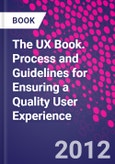Table of Contents
Chapter 1: Introduction Part I: Process Chapter 2: The Wheel: A Lifecycle Template Chapter 3: Contextual Inquiry: Eliciting Work Activity Data Chapter 4: Contextual Analysis: Consolidating and Interpreting Work Activity Data Chapter 5: Extracting Interaction Design Requirements Chapter 6: Constructing Design-Informing Models Chapter 7: Design Thinking, Ideation and Sketching Chapter 8: Mental Models and Conceptual Design Chapter 9: Design Production Chapter 10: UX Goals, Metrics and Targets Chapter 11: Prototyping Chapter 12: UX Evaulation Introduction Chapter 13: Rapid Evaluation Methods Chapter 14: Rigorous Empirical Evaluation: Preparation Chapter 15: Rigorous Empirical Evaluation: Running the Session Chapter 16: Rigorous Empirical Evaluation: Analysis Chapter 17: Evaluation Reporting Chapter 18: Wrapping up Rigorous UX Evaluation Chapter 19: UX Methods for Agile Development Part II: Design Infrastructure Guidelines Chapter 20: Affordances Demystified Chapter 21: The Interaction Cycle and the User Action Framework Chapter 22: UX Design Guidelines Part III: Advanced Topics Chapter 23: Connections with Software Engineering Chapter 24: Making it Work in the Real World References Exercises Index








